Never mind clocks & watches and all that accurate stuff, when in Fiji one must get used to Fiji time . . .
 Just after sunrise we approached our berth at Suva, Fiji.
Just after sunrise we approached our berth at Suva, Fiji.
Abel Tasman was the first European to sight Fiji in 1643, and this was followed by Captain Cook in 1770.
It was thanks to Captain Bligh during his epic voyage, after the mutiny on HMS Bounty that brought Fiji to the attention of the world.
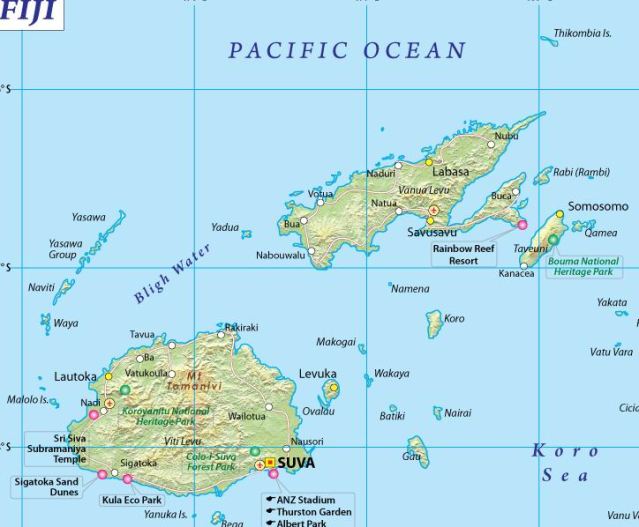
Captain Bligh sailed between the two main islands, Vanua Levu (the long island) and Viti Levu (the round shaped island that contains Suva). As you see the stretch of water is now called Bligh Water.
In 1789, Captain Bligh and eighteen of his crew were cast adrift in a small boat and the Captain navigated, without a chart, but with only a compass and a quadrant (a type of sextant) 6701 km (3618 nautical miles), which was a huge feat of navigation and he only lost one man who was killed by natives on the Tongan island of Tofua.
Bligh landed in the Dutch East Indies (Indonesia today) after a forty seven days voyage, and eventually arrived back in the England, where he took command of another ship and sailed back to Fiji and chartered the 39 islands of Fiji.
Fiji eventually became a colony of the Great Britain in 1874.

In Suva (the capital of Fiji) there are stones markers for various happenings and dates.


We didn’t book a ship’s tour but decided to hire a taxi for the four of us and just have the driver show us around.
On exiting the wharf area, we had quite a choice of taxi driver and in the end we picked one and away we went.

The ship berthed close to the city centre.
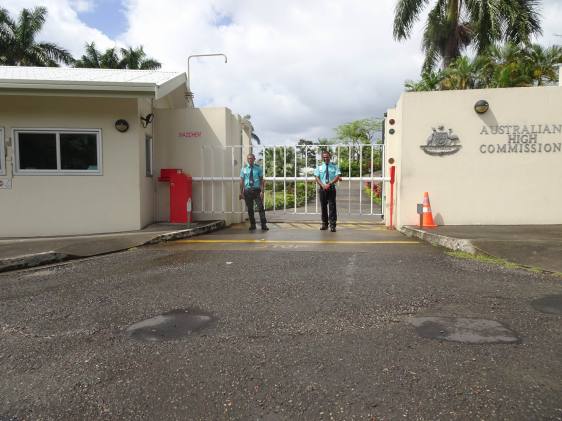
Of course, our driver took us to see the Australian High Commission – guards were happy to see us and waved, unlike a certain other embassy.

Wherever we went we were not far from a church – about 65% of the population are Christian and take their church going seriously. The next largest religious group is the Hindu religion.

Our driver took us to see a Mormon church – we could walk around the grounds, but we didn’t go into the main building. The main building can be seen in the above photograph, and the one above this is a distant shot.

Everywhere was very neat and tidy.

When I took this picture the entrance to the church was behind me and all the buildings that you can see are all part of this church. The one in the centre is the administration building, I think.

Check the first photograph of this church and you will see the statue on the roof of the main church.

We next drove up into the hills and came across Colo I Suva which is a rain forest eco resort, and I think we were told that it is owned by an Australian lady. As you see it had started to rain, but it didn’t last long.

I was standing in the bar when I took this picture.

The main hotel is across the bridge I was in a ‘satellite’ area, which was a quiet area for reading or just to listen to the birds in the trees.

The driver then took us to a look-out point and told us of Joskes Brew. Note the alcohol percentage, at first, I thought it was a type of beer, but it is cane spirit mixed with cola. I haven’t tasted it.

and the history of sugar cane farming.

Paul Joske 1825 – 1898
Although Paul Joske and his partner failed to grow sugar, and lost the huge sum of £30,000, he went on to help design Suva.

The mountain the can be seen sticking up in the above picture was originally called “Rama” or the Devils thumb, because it reminded the locals of a man trying to claw his was out of Hell.
After Paul Joske committed suicide the ‘Devil’s Thumb’ was renamed ‘Joske’s Peak’ in memory of him because of his contribution to the creation of Suva.
As an aside, Sir Edmond Hilary who was the first man to climb Mount Everest failed twice to scale Joske’s Peak. The first attempt was due to not being able to get close enough to the base due to heavy undergrowth and on the second attempt he tried to climb the wrong side. He did climb it eventually, but not until 1983, which was 30 years after he’d climbed Everest.
The ‘thumb’ is a volcanic plug that towers over a local village.
Fiji became an independent nation in 1970, with the Queen as Head of State.
From the lookout point we made our way to Government House, which used to be the residency of the Governor-General, who represented the Queen.
In 1987 Fiji became a republic after two military coups.
Government House, which was built in 1928 after a fire destroyed the original building, is now the official residence of the President of Fiji.

Government House faces the sea, and it was from a position in front of this building that the photograph of Joske’s Peak was taken.

A zoom facility does come in handy at times.

There are guards at the entrance to the Government House.


This is the plaque at the entrance to Government House.

It had been over thirty years since I was last in Suva, but I still remembered the town centre.

Our driver dropped us off in the city centre, which gave us time for a little shopping before walking back to the ship, which took about five minutes, because we were so close to the town centre.

From our balcony we could see returning coaches that had taken cruise passengers on various tours, and I noticed that nearly all of the buses displayed a sunshade sign –
Jesus no other name no other way
Obviously none of the locals considered this public declaration of Christianity by the company that owned the buses, or the driver that drove the bus, to be un PC.
How refreshing.

 Sunrise as we approached the island.
Sunrise as we approached the island.




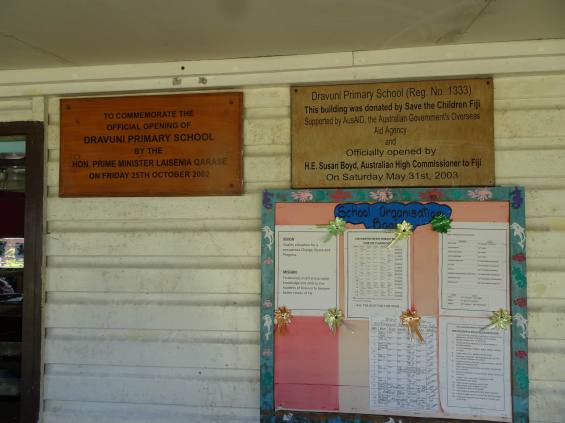






 The local ladies were selling various items strung between palm trees and bushes. There wasn’t any ‘hard sell’, just a polite ‘Bula’ (a Fijian greeting) as we looked over the items for sale.
The local ladies were selling various items strung between palm trees and bushes. There wasn’t any ‘hard sell’, just a polite ‘Bula’ (a Fijian greeting) as we looked over the items for sale.

























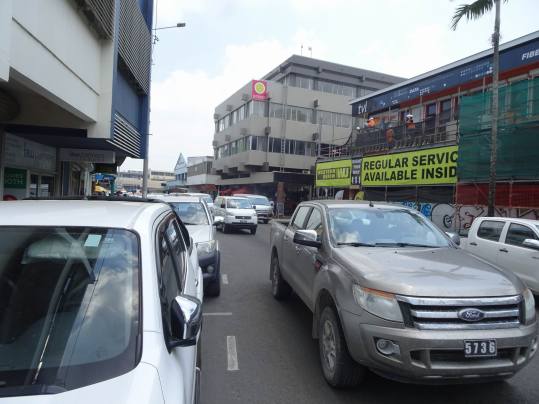




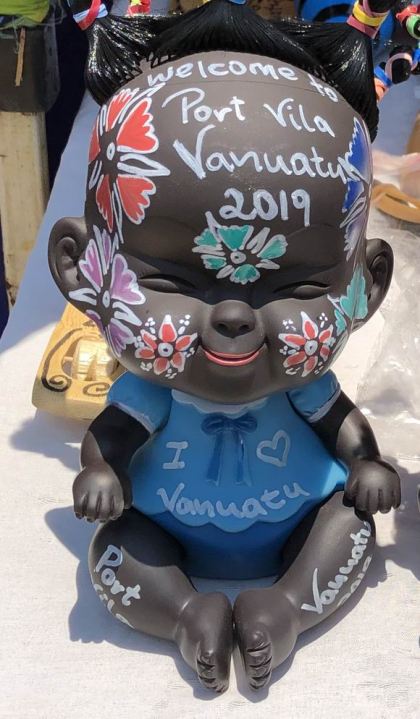




 Once ashore we found a small market selling locally designed textiles.
Once ashore we found a small market selling locally designed textiles.












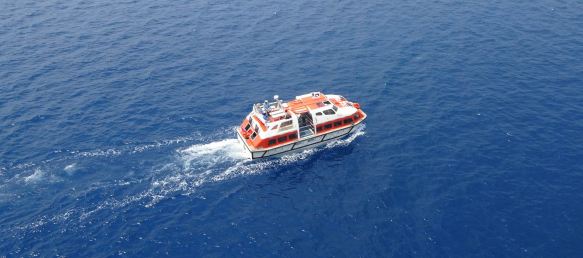






 The short time together ended with the 23rd Psalm, The Lords Prayer and the Responsive Reading,
The short time together ended with the 23rd Psalm, The Lords Prayer and the Responsive Reading,













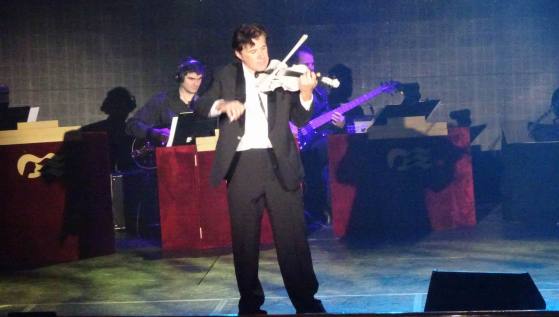
















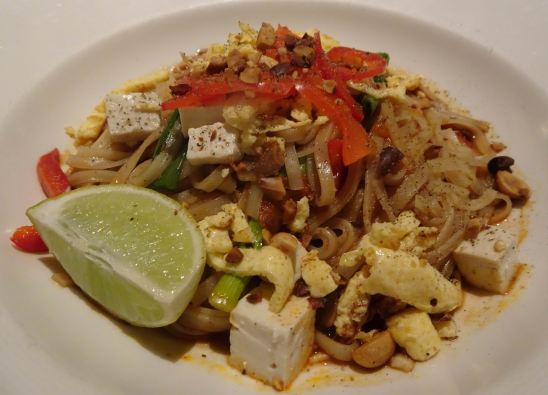

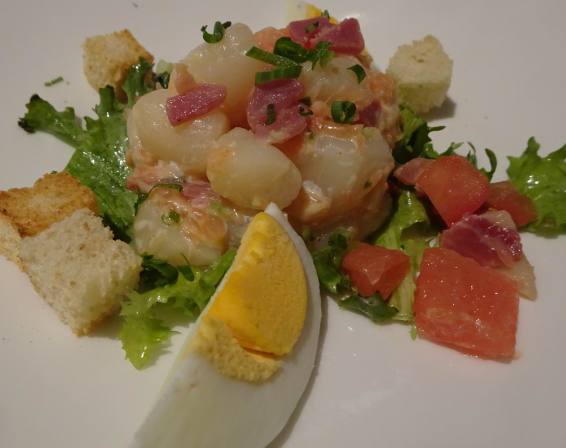
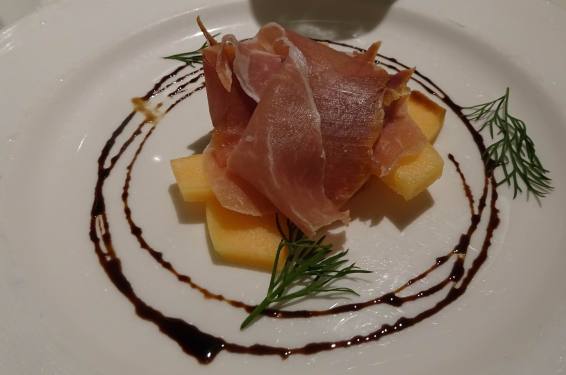
















 A favourite area for a quiet afternoon at sea.
A favourite area for a quiet afternoon at sea.
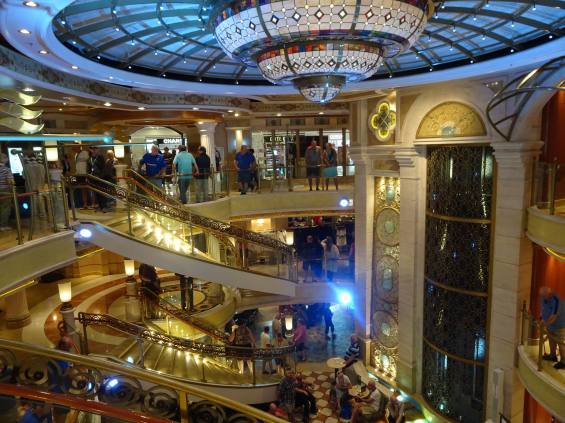










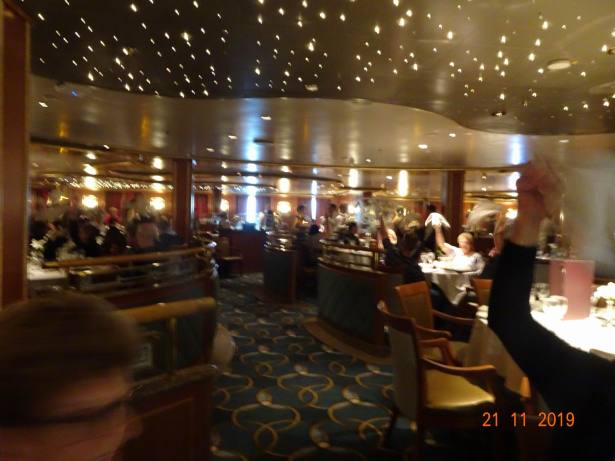



 The whole occasion was very well done and we had plenty of food – in the end it was more than we would normally eat for breakfast. :- o)
The whole occasion was very well done and we had plenty of food – in the end it was more than we would normally eat for breakfast. :- o)


